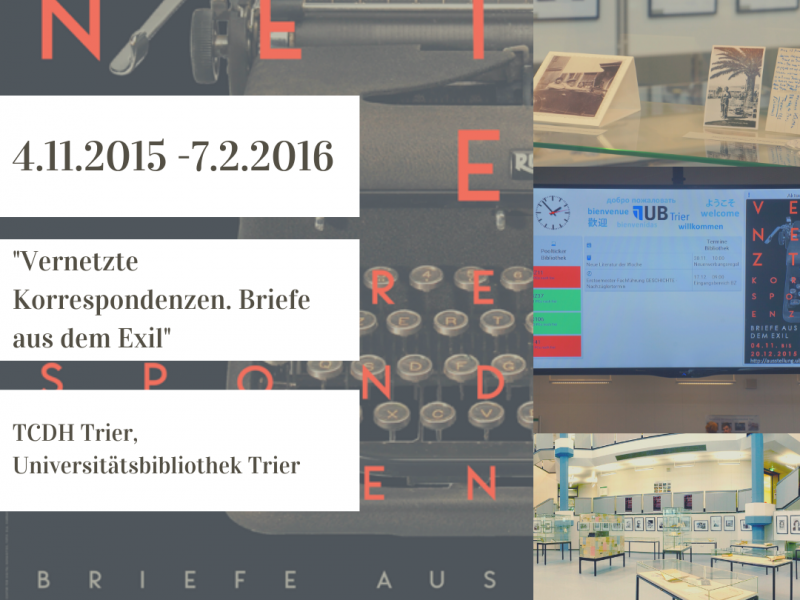Exhibition Advertisement: “Epistolary Networks. Letters from the Exile”
Trier University Library

Date:
04.11.2015Place:
Categories:
Exhibition„Nicht nur die Dichter waren im Exil […]. Auch die Briefe […], und sie teilten die absurden Schicksale jener, die ihre Heimat so sehr lieben, daß sie eher ihr Land verlassen, als im geschändeten Vaterland weiterzuleben“ [“Not only the poets were in exile […]. The letters also […], and they shared the ludicrous of those loving their homeland so much that they rather leave their country than continue to live in a dishonoured motherland”], writes Hermann Kesten in the preface to his collection of letters from the exile “Deutsche Literatur im Exil” published in 1964.
For the numerous poets fleeing Germany after the Nazi takeover, emigration does not only mean losses of material and cultural possessions but also the forfeiture of their known surroundings; former valuable friendships and acquaintances cannot directly be attended to anymore. At the same time, personal networks gain significance, often being the only thing emigrants can recover into exile after the loss of their personal existence. They prove important in the face of everyday challenges and even become essential for survival. In this context, letters emerge as the substantial media of contact and interchange as can be seen in the thousands upon thousands of letters preserved from the exile.
This exhibition highlights a select number of these letters and, on the one hand, shows them as media of networking – crossing borders, overcoming spatial separation, and starting bigger projects such as magazines and anthologies. On the other hand, they are also shown as sources of the German literary history, as ‘contemporary witnesses’ allowing for a detailed insight into the conceptual world of their writers: their concerns and hardships, hopes and disappointments, their political stances and aesthetic concepts.
Amongst the writers of letters from 1933 to 1946 are well-known authors such as Stefan Zweig, Joseph Roth, or Ernst Toller, but also lesser known persons such as Alfred Neumann, René Schickele, or Annette Kolb. In addition to the letters the exhibition also shows manuscripts of literary works, magazines, and first editions from the era of exile literature, as well as other documents of the escape such as travel tickets, permits, and affidavits. The very typewriter of poet Alfred Döblin – a Royal Arrow with a French keyboard – will also be on display. The exhibition is framed by contemporary photographs of the writers.
The exhibits are taken from the collections of the German Literature Archive Marbach, the Munich Literature Archive Monacensia, and the Trier University Library.
The exhibition opens on 4 November 2015, 6.15 pm, with an introduction by Trier literary scholar Dr Vera Hildenbrandt and Dr Roland S. Kamzelak, vice director of the German Literature Archive Marbach, followed by actress Barbara Ullmann lending her voice to some of the writers in a lecture from selected letters.
The exhibition is on display from 4 November to 20 December 2015 and can be visited during the opening hours of the Trier University Library (Mon-Fri, 8 am – 12 pm, Sat 8 am – 7 pm, Sun 11 am – 3 pm).
Exhibition Concept and Contact
Dr Vera Hildenbrandt
Theresia Biehl, MA
The exhibition is organized within the frame of the project “Epistolary Networks | Exilnetz33” (www.exilnetz33.de).

